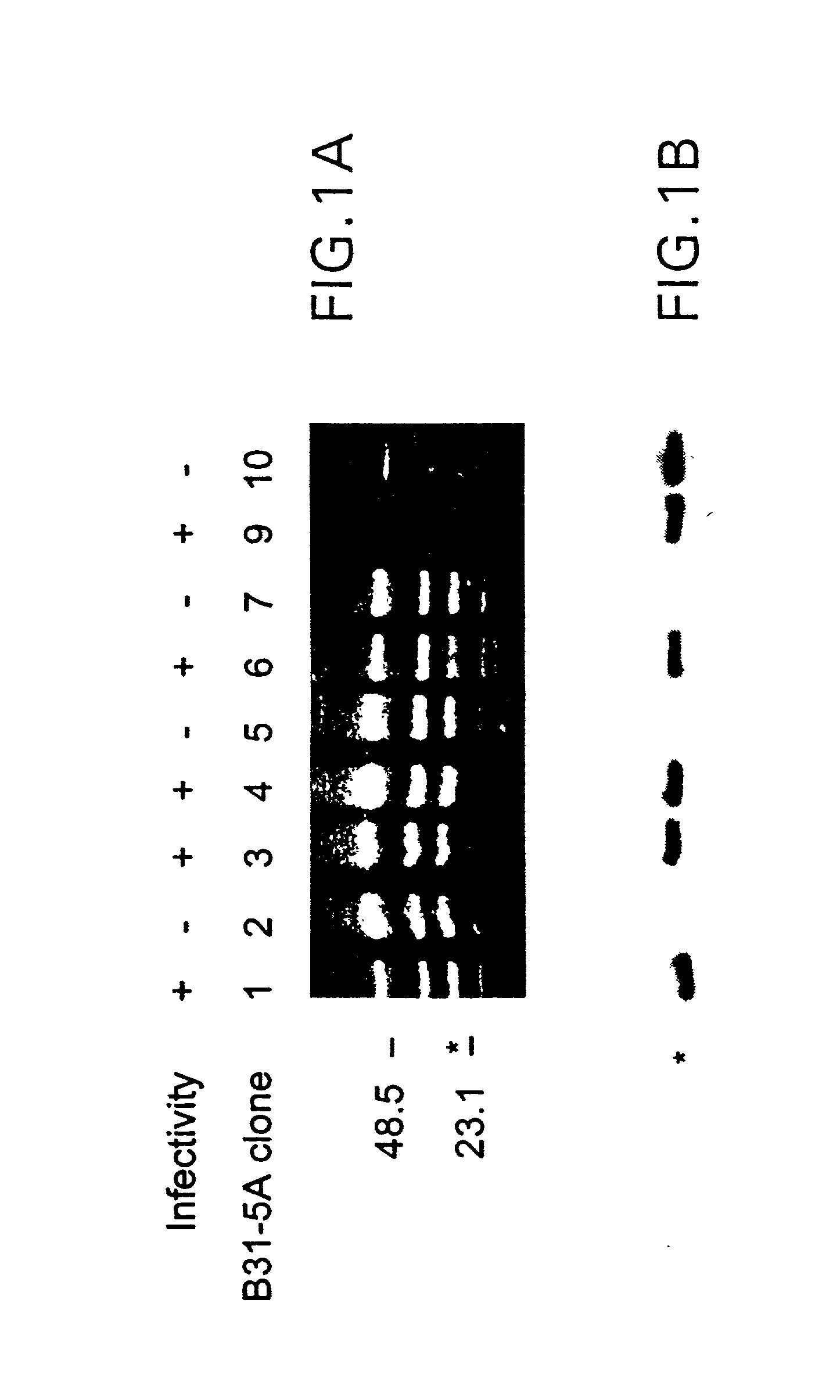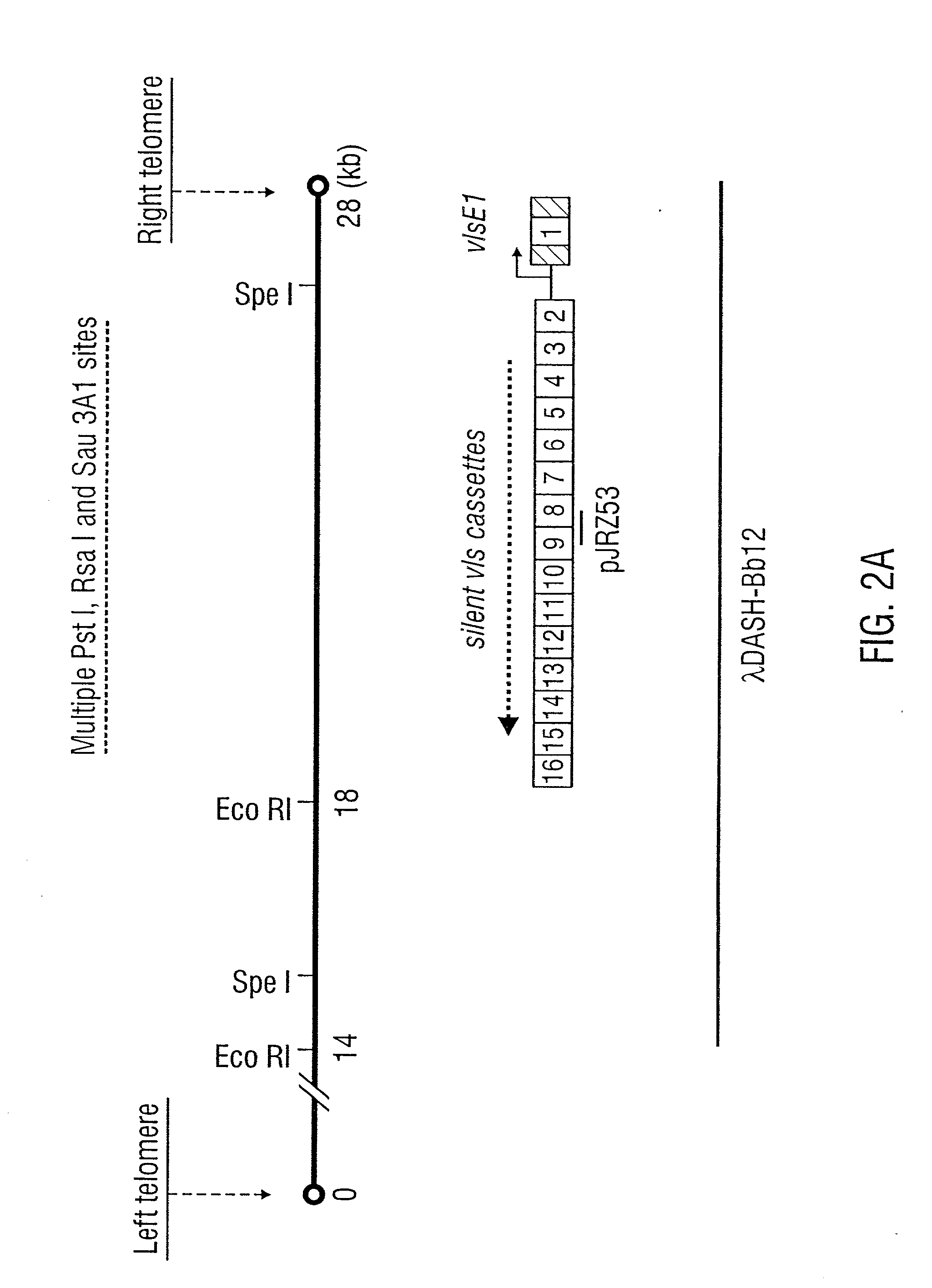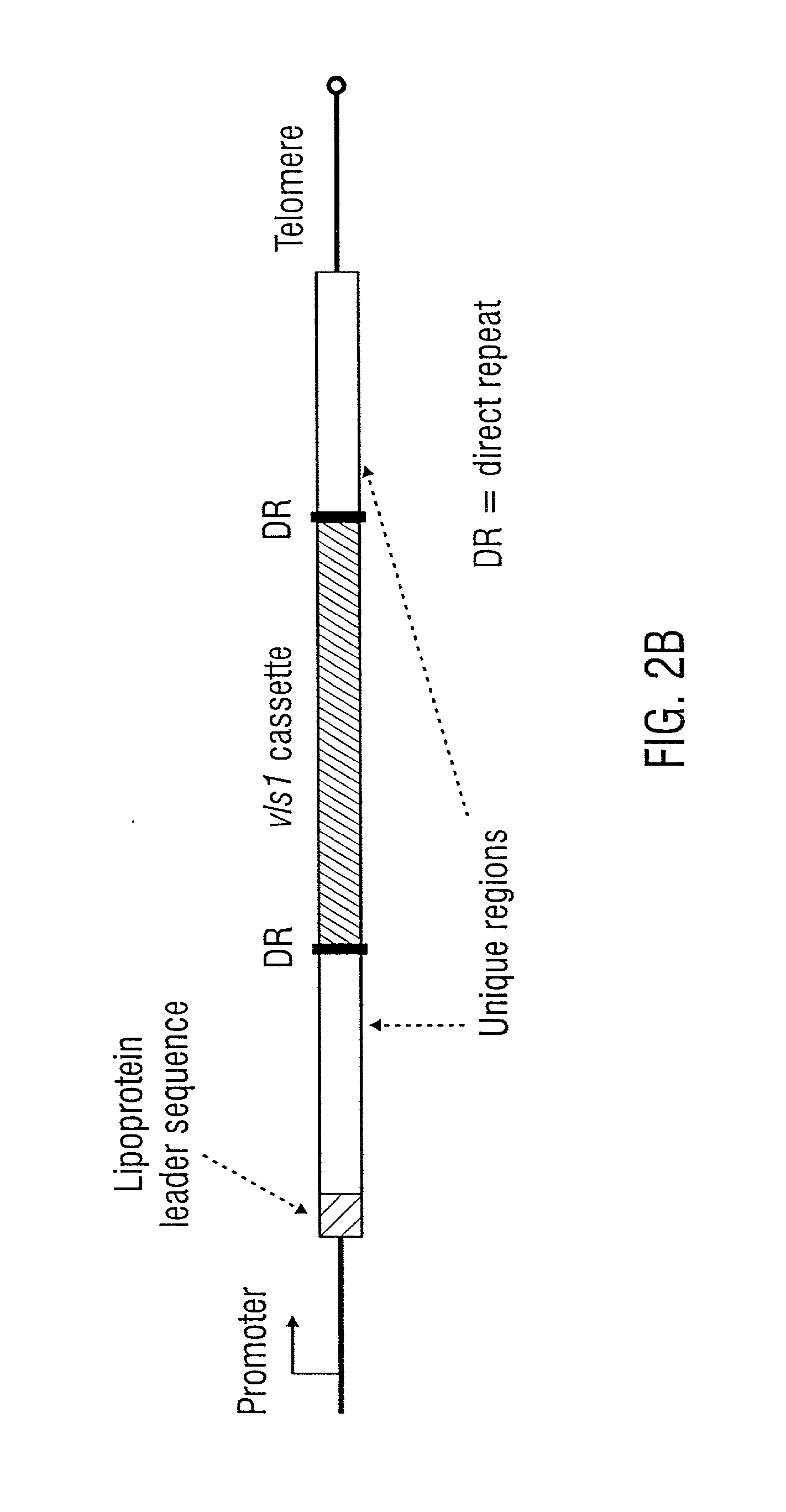VMP-like sequences of pathogenic Borrelia
a borrelia and vmp technology, applied in the field of molecular biology, can solve the problems of ospd not being a useful protein for diagnosis or immunoprotection, difficult to diagnose lyme disease, and refractory to treatment,
- Summary
- Abstract
- Description
- Claims
- Application Information
AI Technical Summary
Benefits of technology
Problems solved by technology
Method used
Image
Examples
example 1
5.1 Example 1--Experimental Procedures
[0267] 5.1.1 Bacterial Strains
[0268] B. burgdorferi strains B31 (ATCC 35210), Sh-2-82, and N40 were originally isolated from Ixodes scapularis ticks in the state of New York (Burgdorfer et al., 1982; Schwan et al., 1988b; Barthold et al., 1990). These strains have been shown to be infectious in laboratory animals (Barthold et al., 1990; Norris et al., 1995). The high-passage B31 strain (ATCC 35210) had undergone in vitro passages for several years and had lost infectivity (Moody et al., 1990). Nine B31 and 10 Sh-2-82 passage 5 clones had been characterized according to infectivity and described previously by Norris et al. (1995). An additional nine high- and low-infectivity B31 clones were obtained from P. A. Rosa and T. G. Schwan of the Rocky Mountain Laboratories, Hamilton, Mont. Infectious B. afzelii ACA-1 and B. garinii IP-90 clones were obtained by subsurface plating of organisms following isolation from experimentally infected C3H / HeN mice...
PUM
| Property | Measurement | Unit |
|---|---|---|
| diameters | aaaaa | aaaaa |
| diameters | aaaaa | aaaaa |
| temperatures | aaaaa | aaaaa |
Abstract
Description
Claims
Application Information
 Login to View More
Login to View More - R&D
- Intellectual Property
- Life Sciences
- Materials
- Tech Scout
- Unparalleled Data Quality
- Higher Quality Content
- 60% Fewer Hallucinations
Browse by: Latest US Patents, China's latest patents, Technical Efficacy Thesaurus, Application Domain, Technology Topic, Popular Technical Reports.
© 2025 PatSnap. All rights reserved.Legal|Privacy policy|Modern Slavery Act Transparency Statement|Sitemap|About US| Contact US: help@patsnap.com



